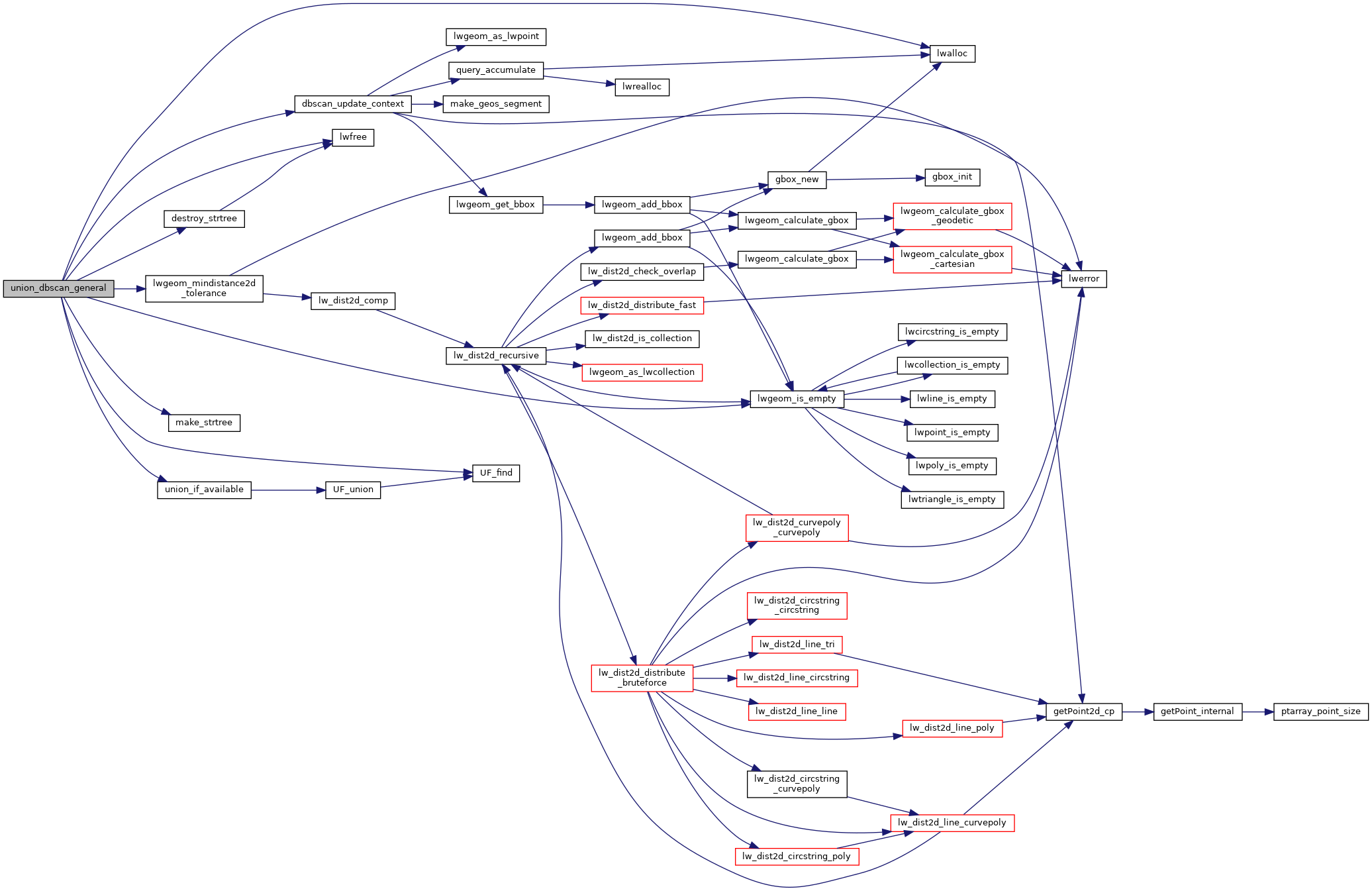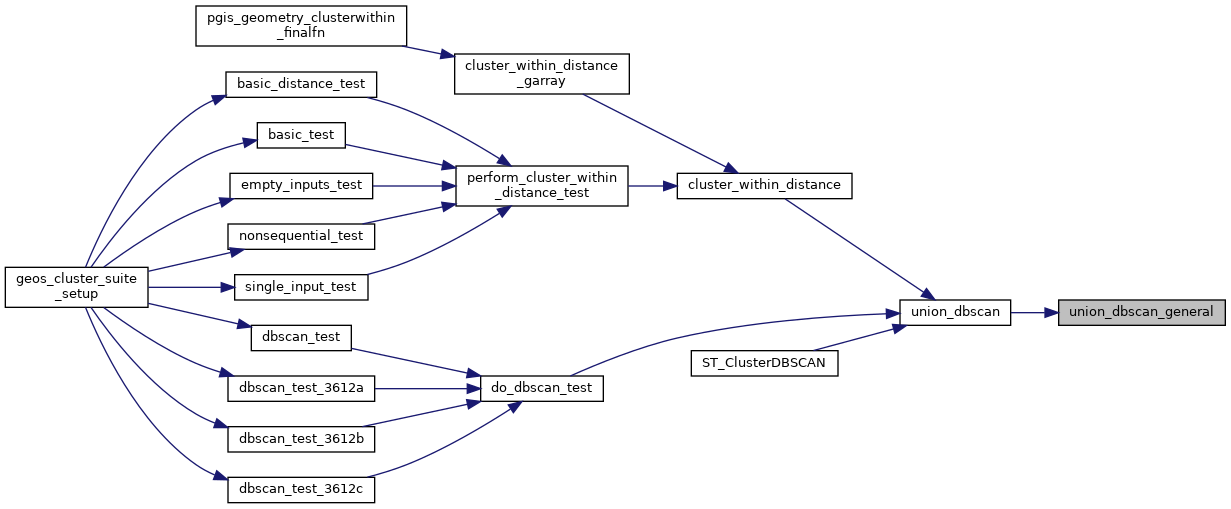◆ union_dbscan_general()
|
static |
Definition at line 382 of file lwgeom_geos_cluster.c.
double lwgeom_mindistance2d_tolerance(const LWGEOM *lw1, const LWGEOM *lw2, double tolerance)
Function handling min distance calculations and dwithin calculations.
Definition: measures.c:207
static int dbscan_update_context(GEOSSTRtree *tree, struct QueryContext *cxt, LWGEOM **geoms, uint32_t p, double eps)
Definition: lwgeom_geos_cluster.c:264
static struct STRTree make_strtree(void **geoms, uint32_t num_geoms, char is_lwgeom)
Make a GEOSSTRtree that stores a pointer to a variable containing the array index of the input geoms.
Definition: lwgeom_geos_cluster.c:81
static void destroy_strtree(struct STRTree *tree)
Clean up STRTree after use.
Definition: lwgeom_geos_cluster.c:123
static void union_if_available(UNIONFIND *uf, uint32_t p, uint32_t q, char *is_in_core, char *in_a_cluster)
Definition: lwgeom_geos_cluster.c:292
static int lwgeom_is_empty(const LWGEOM *geom)
Return true or false depending on whether a geometry is an "empty" geometry (no vertices members)
Definition: lwinline.h:193
Definition: lwgeom_geos_cluster.c:36
Definition: lwgeom_geos_cluster.c:44
References dbscan_update_context(), destroy_strtree(), QueryContext::items_found, LW_FAILURE, LW_SUCCESS, LW_TRUE, lwalloc(), lwfree(), lwgeom_is_empty(), lwgeom_mindistance2d_tolerance(), make_strtree(), QueryContext::num_items_found, STRTree::tree, UF_find(), and union_if_available().
Referenced by union_dbscan().
Here is the call graph for this function:

Here is the caller graph for this function:
